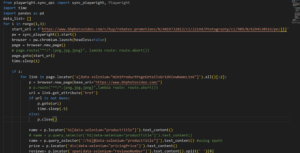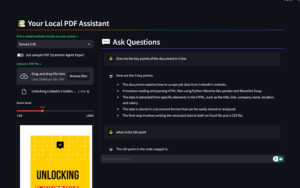As a Python developer and web scraper, you know that getting the right data is crucial. But have you ever hit a wall when trying to access certain websites? The secret weapon you might be overlooking is right in the request itself: headers.
Why Headers Matter
Headers are like your digital ID card. They tell websites who you are, what you’re using to browse, and what you’re looking for. Without the right headers, you might as well be knocking on a website’s door without introducing yourself – and we all know how that usually goes.
Look the above code. Here I used the get request without headers so that the output is 403. Hence I failed to scrape data from indeed.com.
But after that I used suitable headers in my python request. The I find the expected result 200.
The Consequences of Neglecting Headers
- Blocked requests
- Inaccurate or incomplete data
- Inconsistent results
Let’s dive into three methods that’ll help you master headers and take your web scraping game to the next level.
Here I discussed about the user-agent
Method 1: The Httpbin Reveal
Httpbin.org is like a mirror for your requests. It shows you exactly what you’re sending, which is invaluable for understanding and tweaking your headers.
Here’s a simple script to get started:
| import requests r = requests.get(‘https://httpbin.org/user-agent’) print(r.text) with open(‘user_agent.html’, ‘w’, encoding=’utf-8′) as f: f.write(r.text) |
This script will show you the default User-Agent your Python requests are using. Spoiler alert: it’s probably not very convincing to most websites.
Method 2: Browser Inspection Tools
Your browser’s developer tools are a goldmine of information. They show you the headers real browsers send, which you can then mimic in your Python scripts.
To use this method:
- Open your target website in Chrome or Firefox
- Right-click and select “Inspect” or press F12
- Go to the Network tab
- Refresh the page and click on the main request
- Look for the “Request Headers” section
You’ll see a list of headers that successful requests use. The key is to replicate these in your Python script.
Method 3: Postman for Header Exploration
Postman isn’t just for API testing – it’s also great for experimenting with different headers. You can easily add, remove, or modify headers and see the results in real-time.
To use Postman for header exploration:
- Create a new request in Postman
- Enter your target URL
- Go to the Headers tab
- Add the headers you want to test
- Send the request and analyze the response
Once you’ve found a set of headers that works, you can easily translate them into your Python script.
Putting It All Together: Headers in Action
Now that we’ve explored these methods, let’s see how to apply custom headers in a Python request:
| import requests headers = { “User-Agent”: “Mozilla/5.0 (Windows NT 10.0; Win64; x64) AppleWebKit/537.36 (KHTML, like Gecko) Chrome/129.0.0.0 Safari/537.36” } r = requests.get(‘https://httpbin.org/user-agent’, headers=headers) print(r.text) with open(‘custom_user_agent.html’, ‘w’, encoding=’utf-8′) as f: f.write(r.text) |
This script sends a request with a custom User-Agent that mimics a real browser. The difference in response can be striking – many websites will now see you as a legitimate user rather than a bot.
The Impact of Proper Headers
Using the right headers can:
- Increase your success rate in accessing websites
- Improve the quality and consistency of the data you scrape
- Help you avoid IP bans and CAPTCHAs
Remember, web scraping is a delicate balance between getting the data you need and respecting the websites you’re scraping from. Using appropriate headers is not just about success – it’s about being a good digital citizen.
Conclusion: Headers as Your Scraping Superpower
Mastering headers in Python isn’t just a technical skill – it’s your key to unlocking a world of data. By using httpbin.org, browser inspection tools, and Postman, you’re equipping yourself with a versatile toolkit for any web scraping challenge.




